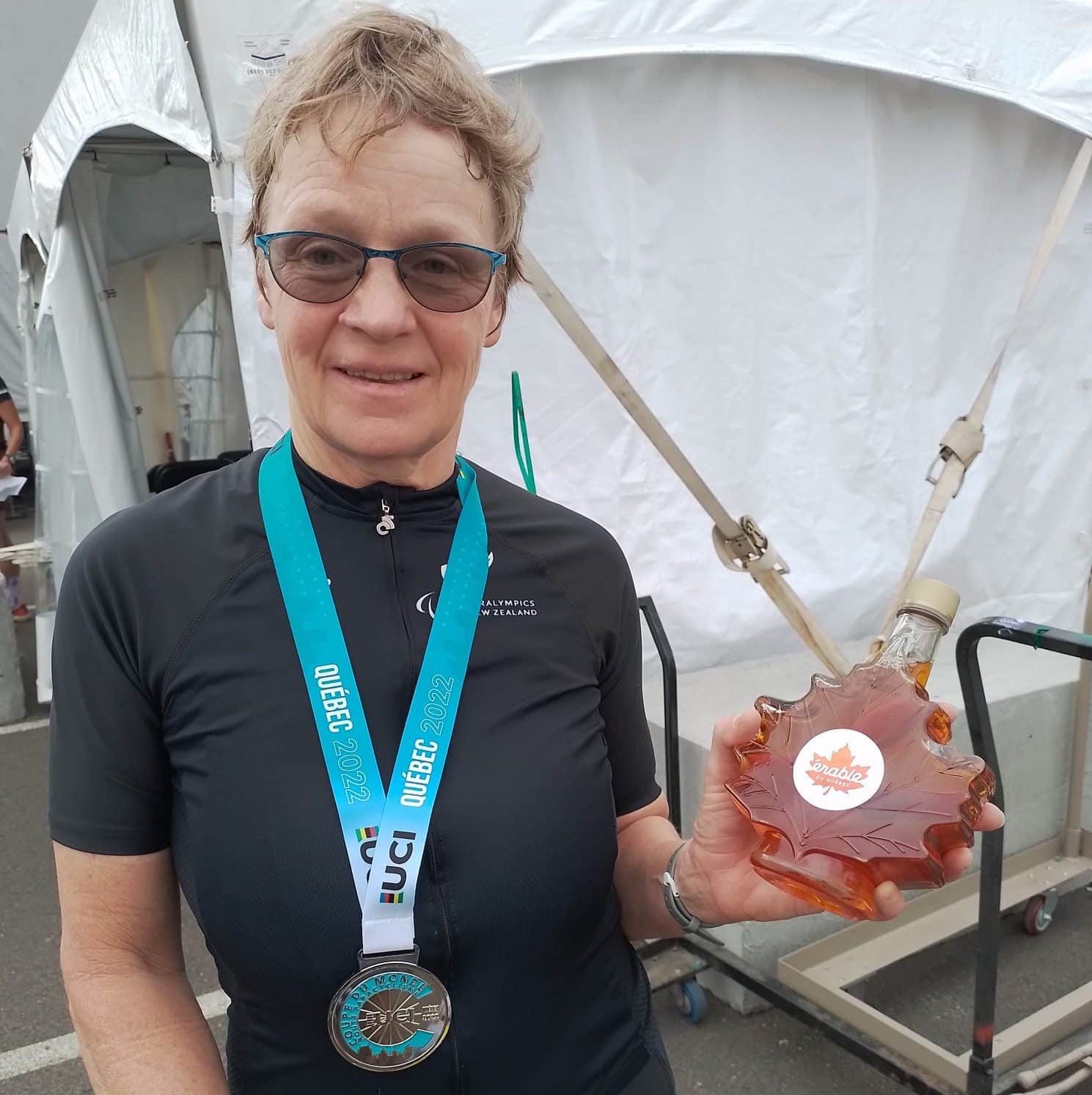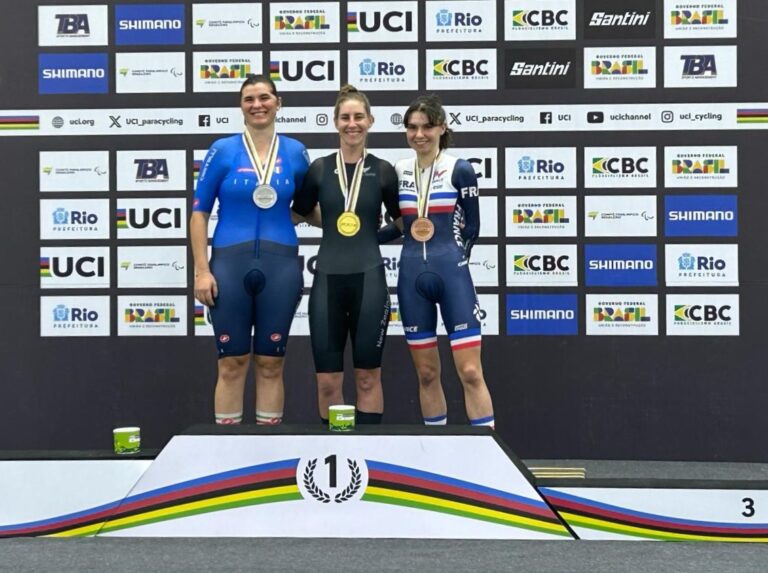It’s a strong start to the Kiwis’ campaign in Canada with Paralympian Eltje Malzbender carrying off silver in the women’s T1 time trial. It’s day one of the 2022 UCI Québec Para Cycling World Cup, and this result sets the five-strong team of New Zealand Para cyclists in good stead for the rest of the event and the World Championships which follow next week.
Malzbender, who lives with a traumatic brain injury (TBI) after being the victim of a hit and run, is renowned for her determination – already winning 4 silver medals at world cups this year. Eltje was a double world champion in 2019, winning the T1 time trial and road race at the World Championships that year. T1 is a class for athletes with significant balance and co-ordination impairments and problems controlling movements. T1 Para cyclists therefore ride tricycles for safety (see notes on classification below).
Technical courses like the one seen in today’s time trial can be more challenging for tricycles, but that was no issue for Eltje, who completed the course in 44:50.23.
“Great performance from Eltje today. In the second lap (of two) she was only 10 seconds slower than Dulce Gonzalez Guerrero in first place. She put 2 minutes between herself and third place. She handled the technical nature of the course here brilliantly and is a credit to the work she has been doing with her coach Hannah van Kampen.”
Team coach Damian Wiseman
In a unique Canadian twist, the medallists were presented not only with their medals on the podium, but also maple syrup, earning a huge grin from Malzbender.
In the men’s T2 time trial, teammate Paralympian Stevo Hills also had a great race, finishing 6th in 34:26.85.
Racing continues tonight with Nicole Murray, Fraser Sharp and Sarah Ellington competing in the time trial. For latest details of team and schedule see:
WHAT DO THE CLASSIFICATIONS MEAN IN PARA CYCLING?
Classification groups Para cyclists with an eligible impairment into sports classes, according to how much their impairment affects their ability to carry out the fundamental activities in their sport.
- Para athletes who are able to use a standard bicycle (with approved adaptations) compete in the five sport classes C1-5. Sport class C1 is allocated to athletes with the most severe activity limitation, while the sport class C5 is allocated to athletes with minimum impairments. The C1-5 sport classes include athletes with limb deficiency, impaired muscle power or range of motion and impairments affecting co-ordination, such as uncoordinated movements and involuntary movements.
- Para cyclists who have a visual impairment race on a tandem bicycle with a sighted cyclist (pilot) at the front. They cycle in the sports class B. This class will include athletes with a range of visual impairment from a low visual acuity (less than 6/60) and/or a visual field of less than 20 degrees through to athletes with no vision.
- Para athletes who ride a tricycle are unable to ride a bicycle safely due to impairment affecting their balance and coordination. They are divided into two classes, T1 and T2. The sport class T1 is allocated to athletes with more significant balance and co-ordination impairments and problems controlling movements than athletes competing in sport class T2.
- There are five different sport classes for handcycle racing. The lower numbers indicate a more severe activity limitation. Para athletes competing in the H1 classes have a complete loss of trunk and leg function and limited arm function, e.g. as a result of a spinal cord injury. In the H4 class Para athletes have limited or no leg function, but good trunk and arm function. Para cyclists in sport classes H1 – 4 compete in a reclined position. In the H5 sport class Para cyclists sit on their knees because they are able to use their arms and trunk to accelerate the handcycle. Para athletes in this sport class might have leg amputations, paraplegia or mild to moderate involuntary and uncoordinated movements.



























